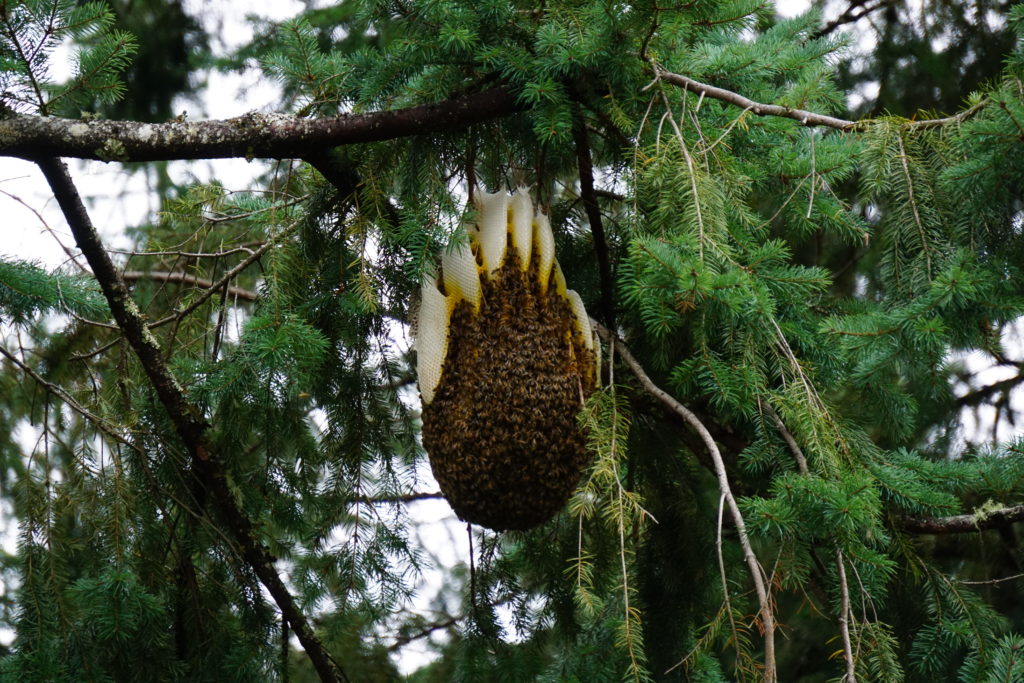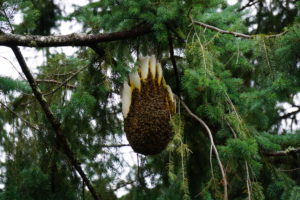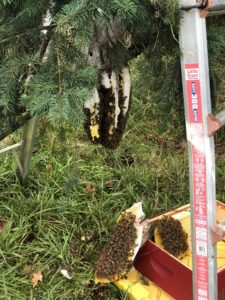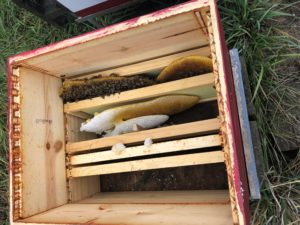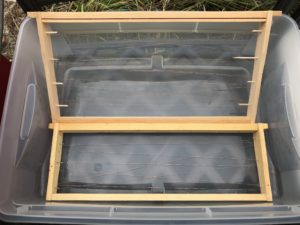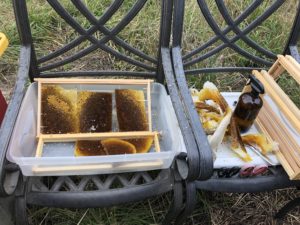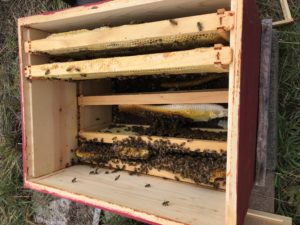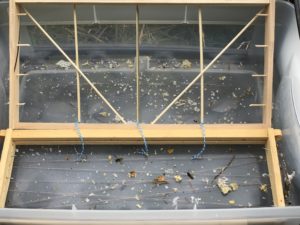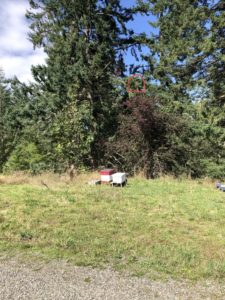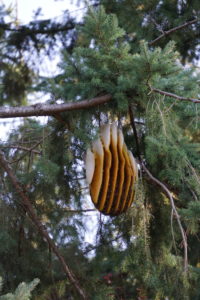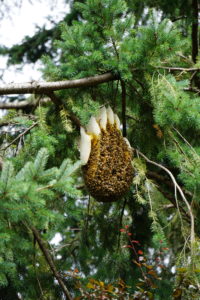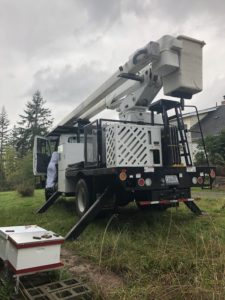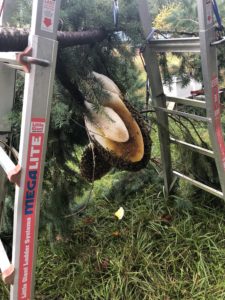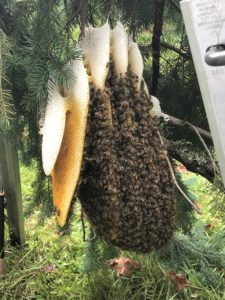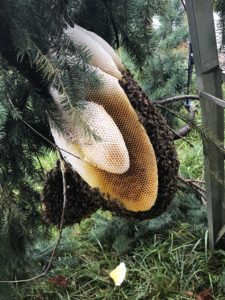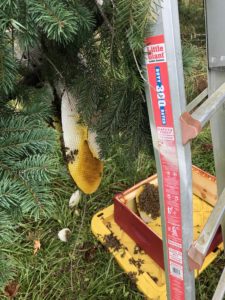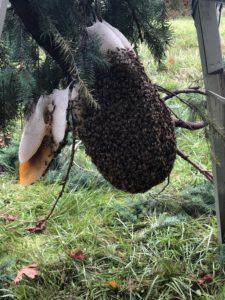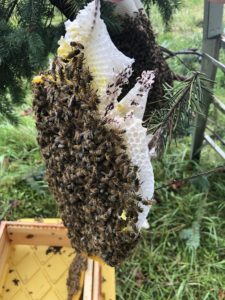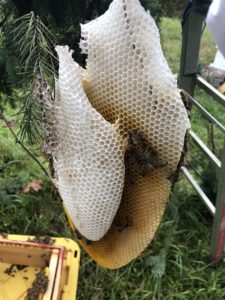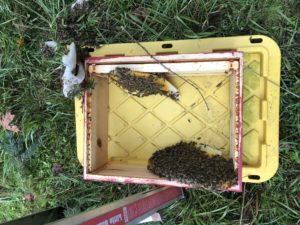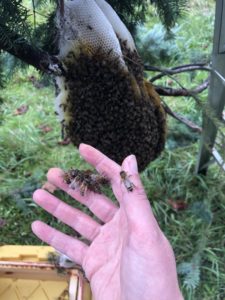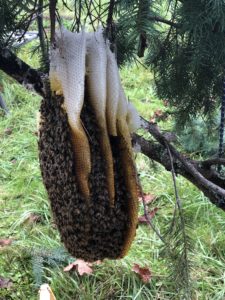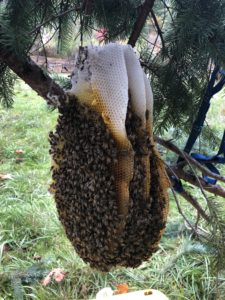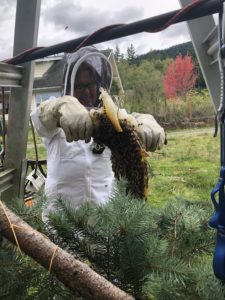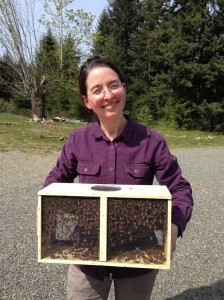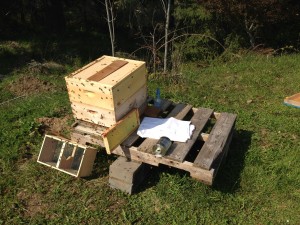This continues (finishes?) Operation Bee Rescue.
This morning I went in for the final comb->frame transfer and queen search.
About half an hour before I started, I moved what bees I could to other boxes and closed them up. I was trying to minimize the number of bees who would be getting excited. I stacked the temporary boxes on the adjoining hives’ lids for easy access.
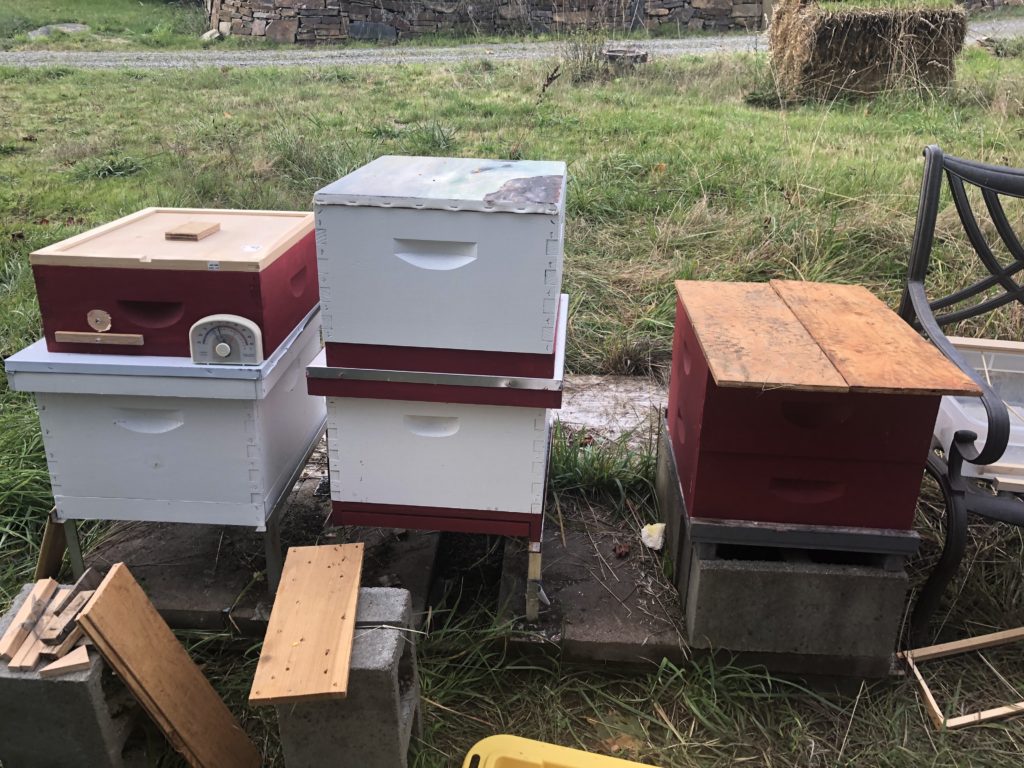
I started at about 9 a.m., with a temperature of about 45 degrees. That’s cool enough that the bees weren’t active, but warm enough not to endanger them (especially with a nice day forecast).
I ran into minor issues almost immediately: the three frames closest to the edge were absolutely buried in bees, and were sort of stuck to the frame. In the process of loosening things up, I got my one and only sting of the adventure.
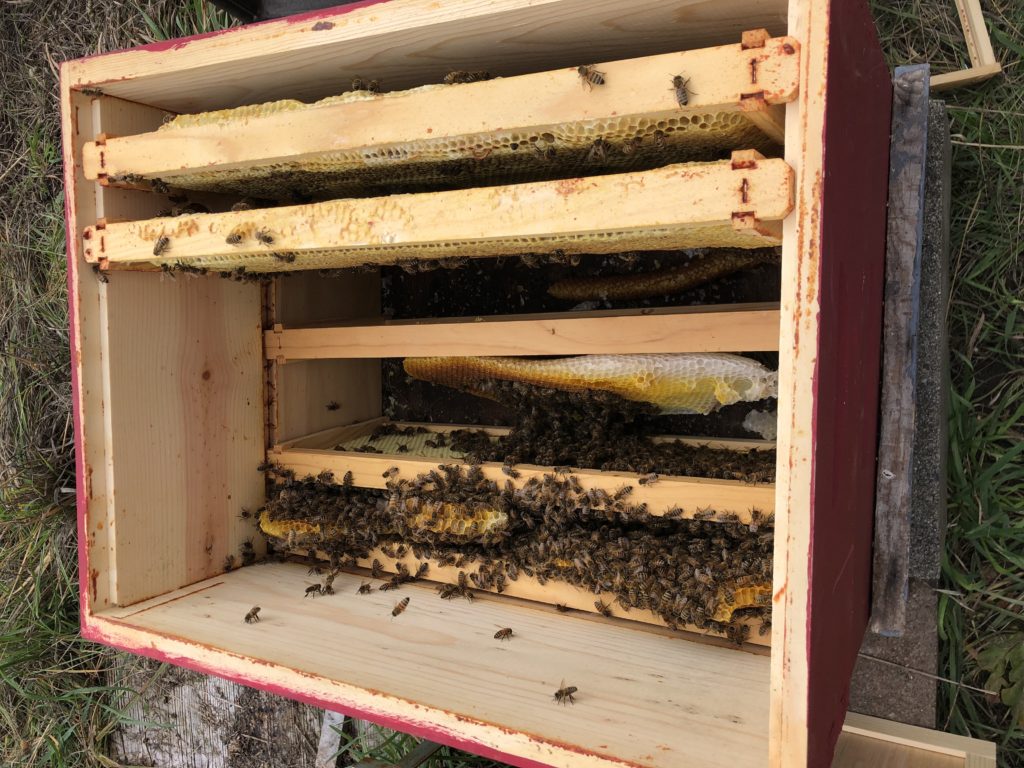
Fortunately I had a plastic card ready in my pocket, so I was able to scrape the stinger out immediately. At that point I caved in and put on nitrile gloves. I like bare-handed where possible, but pulling out wild comb covered in bees is about as invasive as it gets.
Gloved, I was able to coax the first chunk of comb free and lay it onto the framework I had prepped.
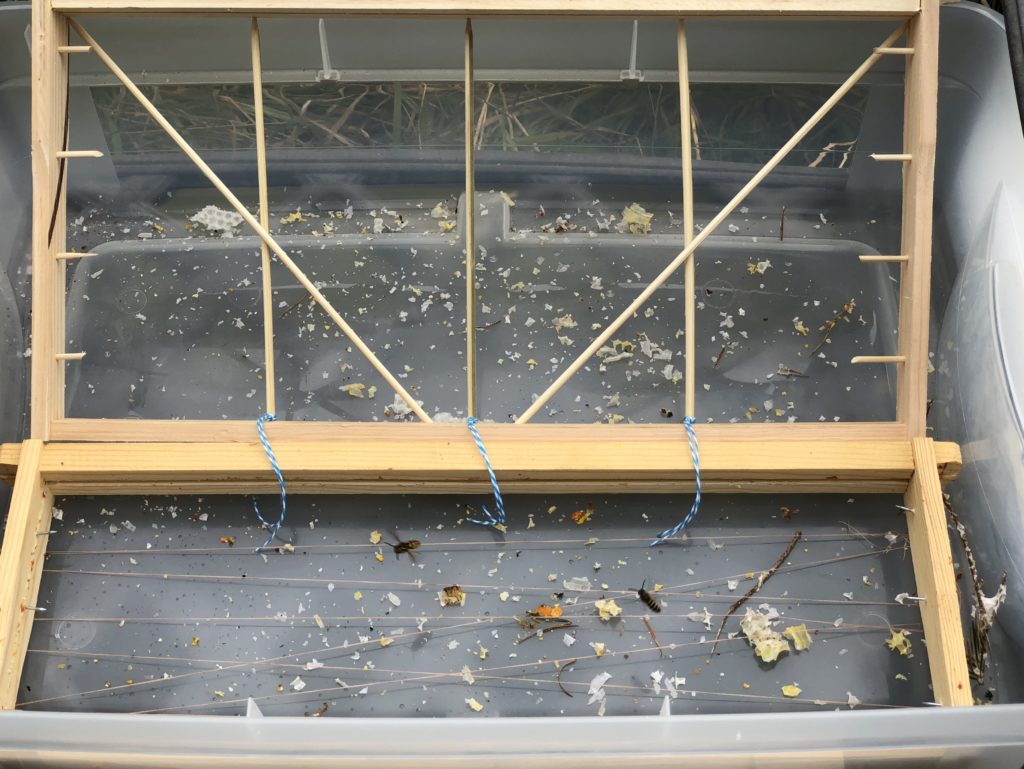
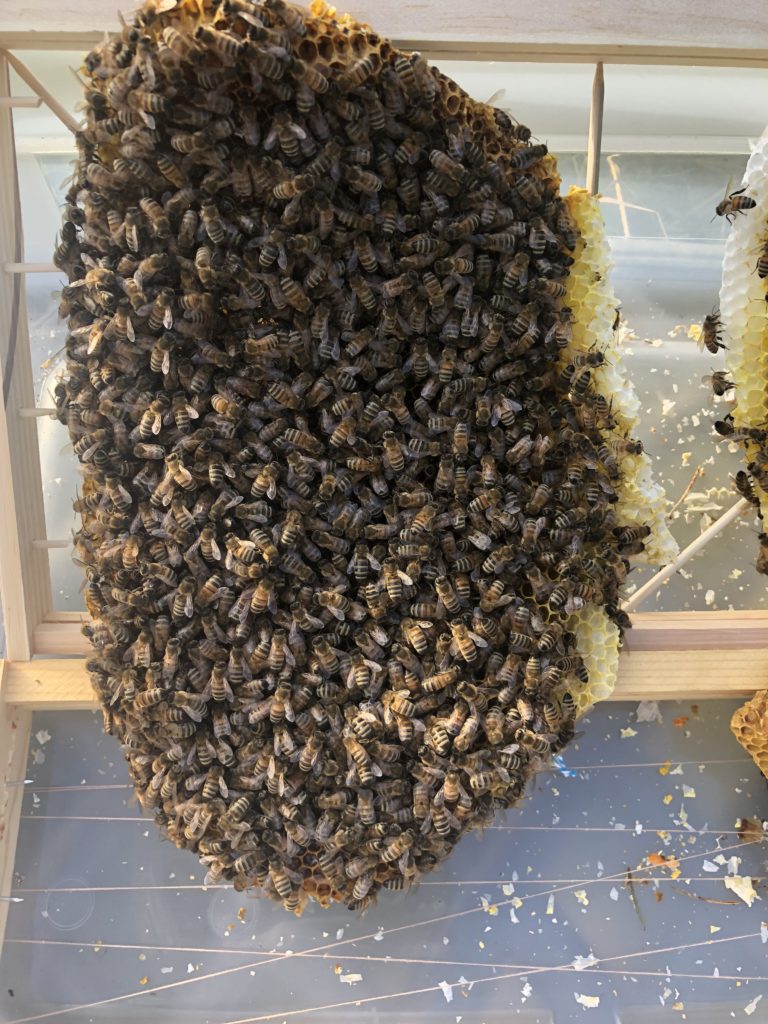
And lo! I got the biggest piece of luck in the whole operation, for there was the queen!Fortunately she was marked with an orange dot.
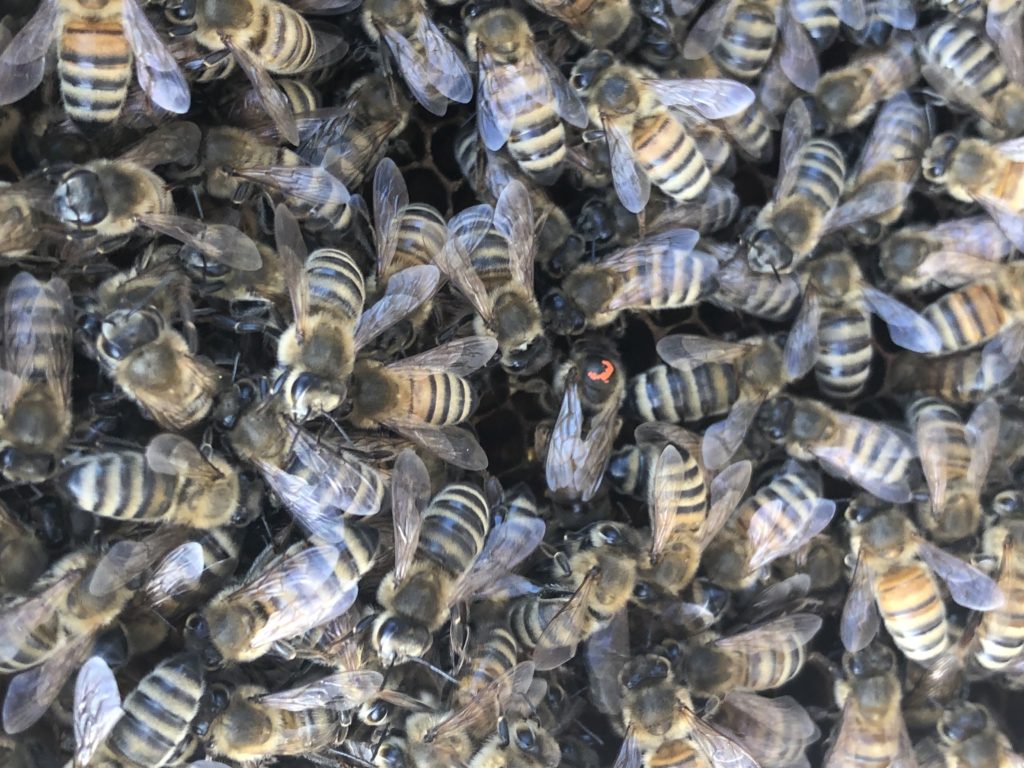
I coaxed her into the little queen cage that a previous year’s queen shipped in, and plugged it with wax. I was anxious to keep her ladyship safe while I finished restructuring the hive.
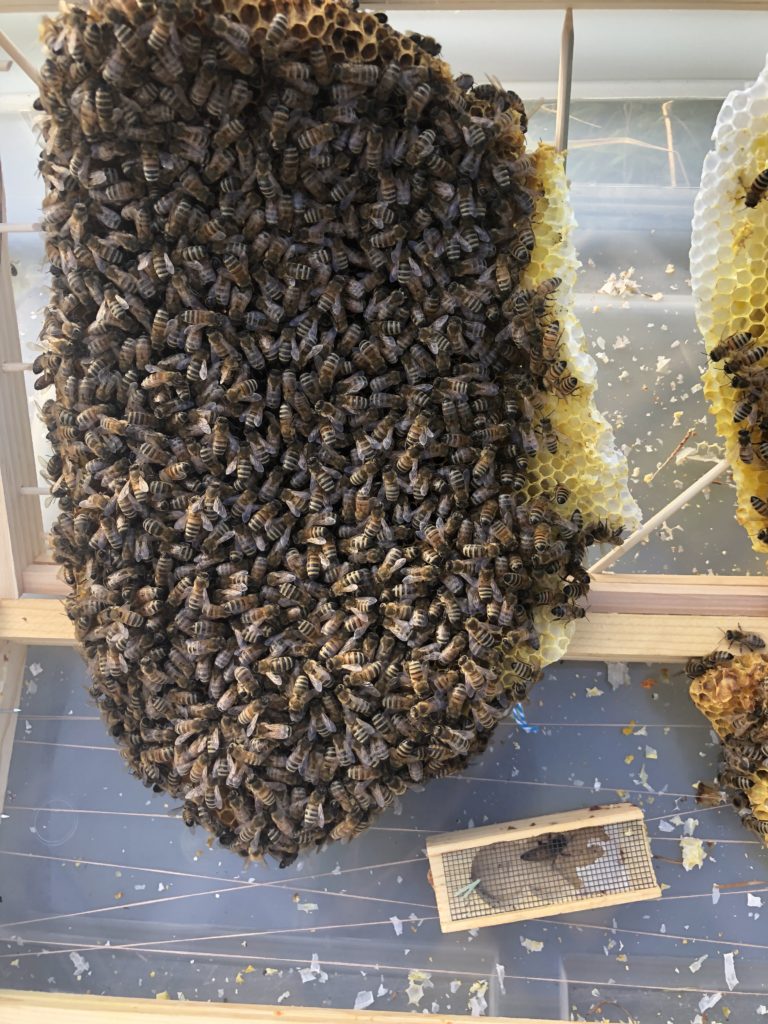
With her out of the way, I was able to take a butter knife and trim the comb to fit the frame. I had to be careful of the girls, but sliding the knife through the middle of the comb worked pretty well.
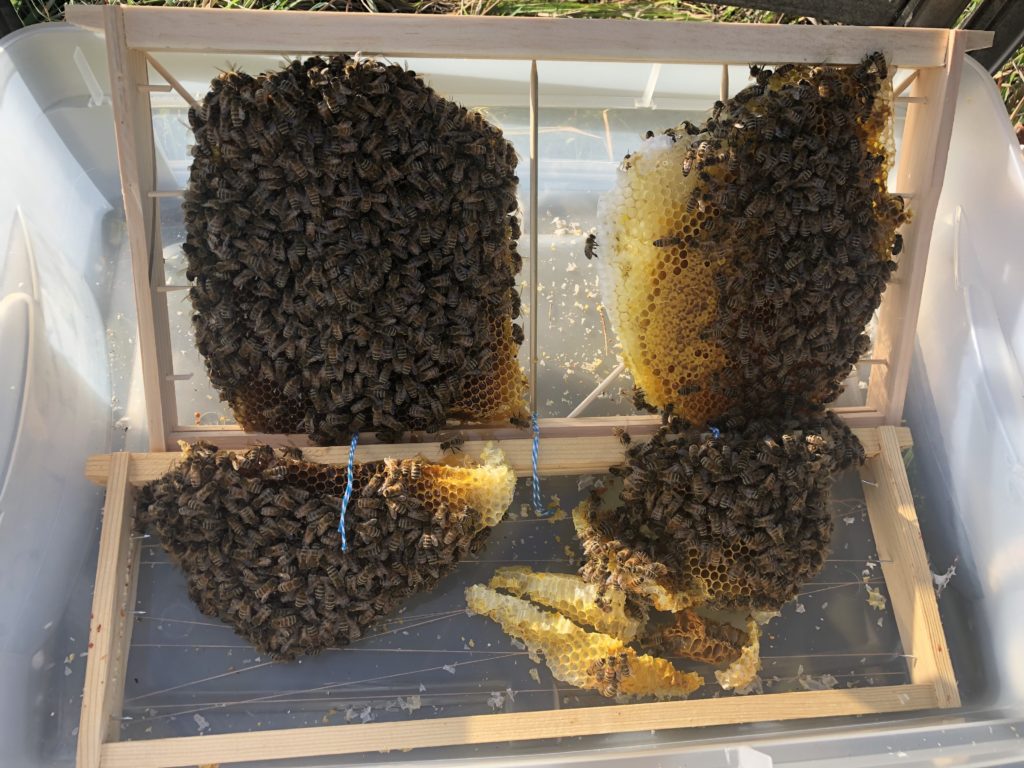
I slid a second batch of skewers into the holes I had prepped, and tied the bottoms to the back-side skewers (which were stapled to the frame).
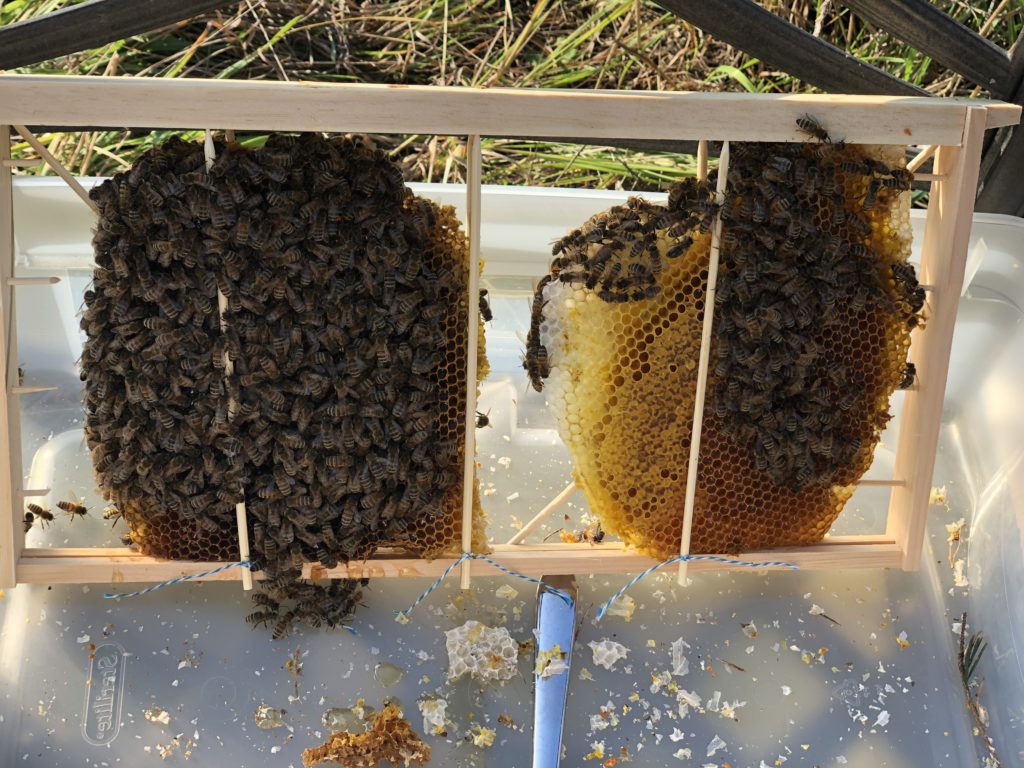
I was pretty pleased with the result. Far superior to the thread method!(Now I have to decide whether to go back and redo the thread frame).
I filled a second frame with scraps. Those weren’t mobbed with bees, so it was a lot easier.
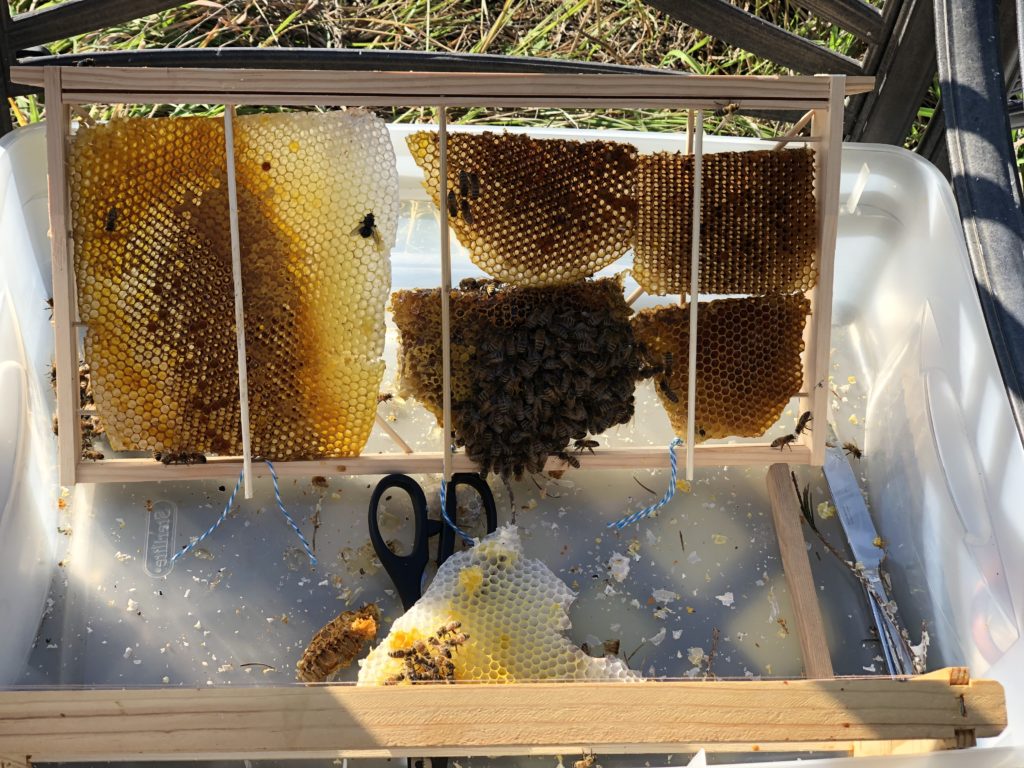
With all the critical pieces of wild comb framed up, I was able to reassemble the hive properly. Then I was ready to release the queen.
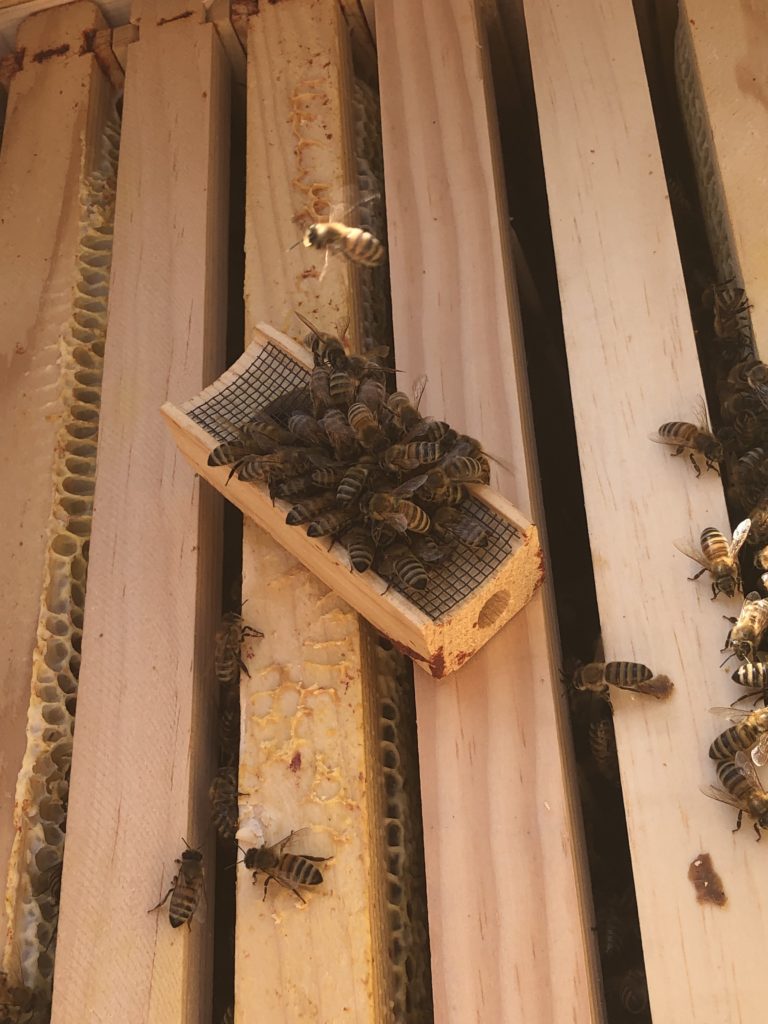
She took her own sweet time leaving the cage. I could tell when she was about to emerge because workers started to mob the entrance.
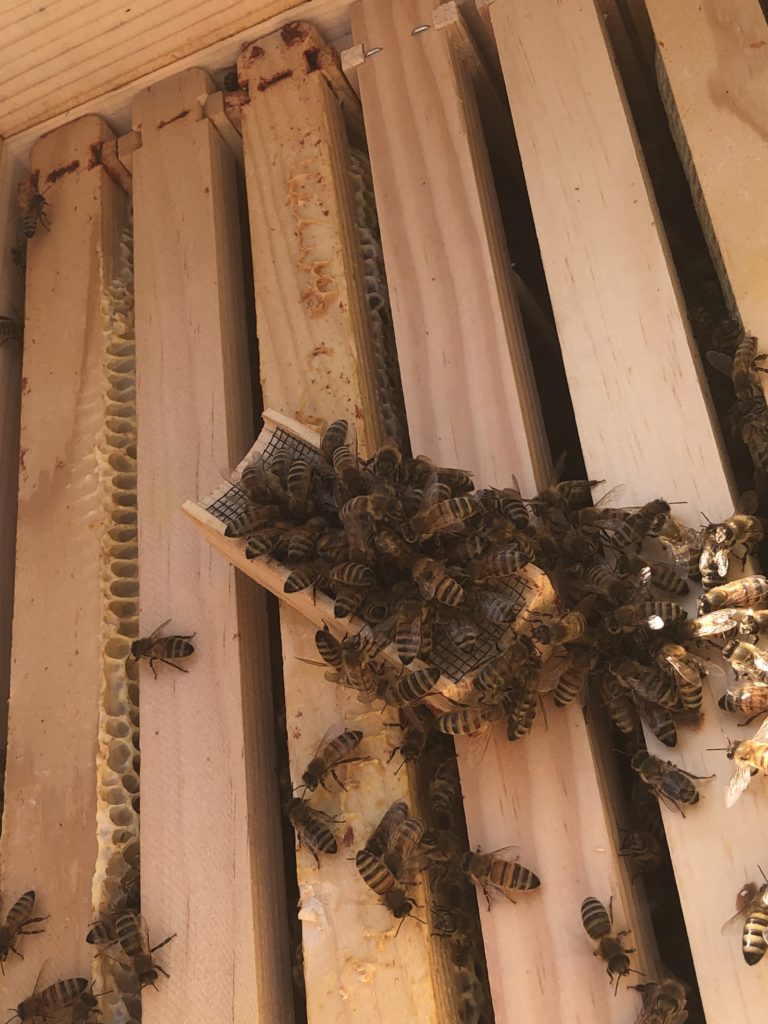
And there she goes! Out of the cage and down into the frames.
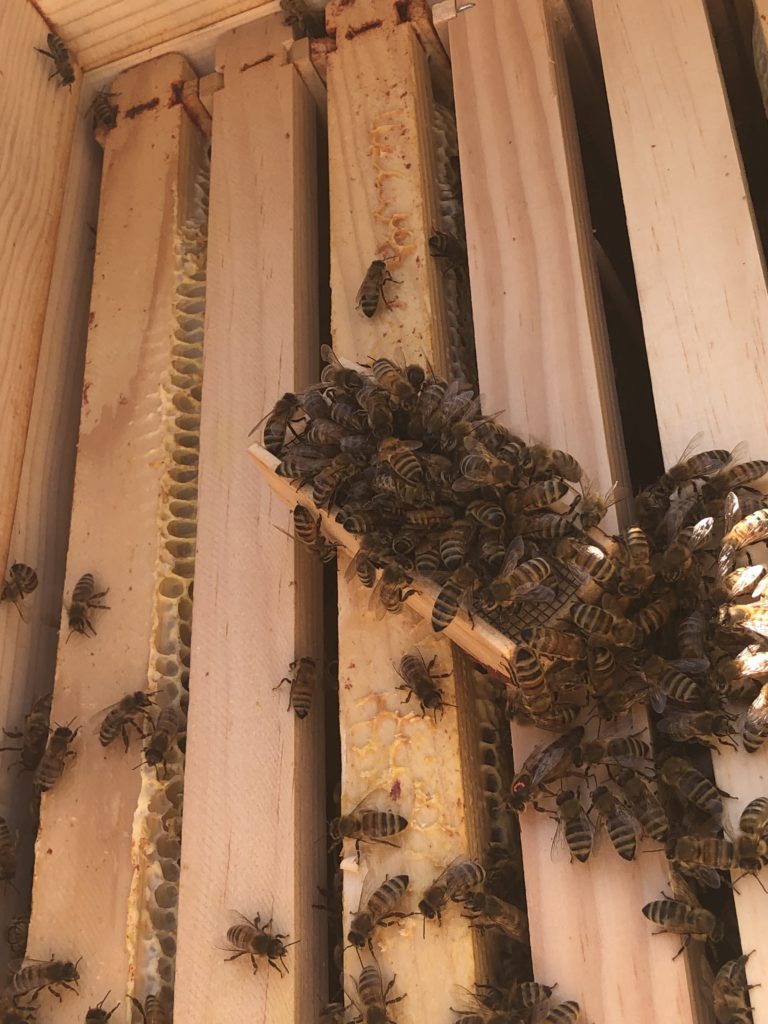
I breathed a big sigh of relief, closed up the hive, and got back to my normal work schedule. I was happy to see a normal level of activity from the rescued hive this afternoon.
All of this would still have an unhappy ending if we didn’t have some spare frames of honey from our other bees: the tree colony had very little honey stored up. Fortunately the hive that resulted from the natural split has been doing well, so their honey will now go back to the parent colony.
Thank you for following along for Operation Bee Rescue!
